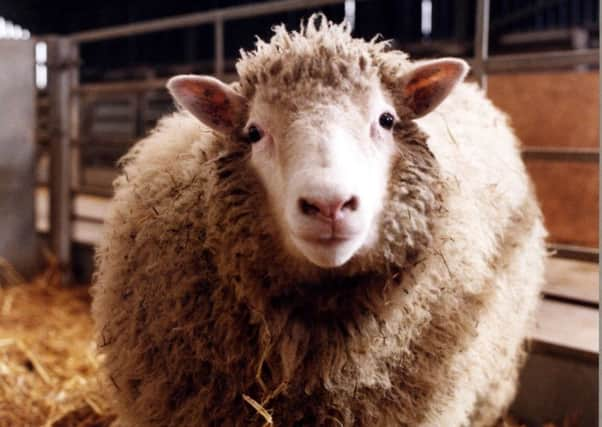Dolly the Sheep: public invited to share their memories


Dolly was the first animal to be cloned from an adult cell. And her birth at the Roslin Institute in Midlothian on July 5, 1996, captured imaginations around the world.
Dolly turned scientific thinking at the time on its head. She proved that cells from anywhere in the body could be made to behave like a newly fertilised egg – something that scientists previously thought was impossible.
Advertisement
Hide AdAdvertisement
Hide AdThe breakthrough paved the way for researchers to develop methods of producing stem cells from adult cells, offering hope of therapies for a wide-range of diseases.
Now members of the public, as well as scientists involved in Dolly’s creation, are being asked to share their reflections on the world’s most famous sheep. The project aims to record people’s ongoing hopes for what the research might achieve as well as their personal memories of Dolly.
Professor Sir Ian Wilmut, who led the team that created Dolly, said: “When Dolly was born we knew that we had achieved something extraordinary.
“But I don’t think any of us would have predicted the level of public interest in our research, or that people would still be enthralled by Dolly and her legacy 20 years later.”
Advertisement
Hide AdAdvertisement
Hide AdThe goal of the research was to develop methods of introducing genetic changes into animals.
Twenty years on, researchers at Roslin – now part of Edinburgh University – are building on Dolly’s legacy by using the latest gene-editing technologies to alter animals’ DNA. Their aim is to improve the health and welfare of farmed animals.
Bill Ritchie, an embryologist on the Dolly project, said: “When Dolly was born we were excited to see that she had a white face because that meant that the experiment had worked. She was cloned from a Finn Dorset which has a white face but both the egg and surrogate mother were Scottish Black-face ewes.”
Tim King, one of the vets who cared for Dolly during her life, said: “Dolly was more like a dog than a sheep in many ways, she would come when you called her name – mostly because she knew there might be a treat involved. We had to put her on a diet at one point as she had so many visitors, she was becoming quite fat.”
Advertisement
Hide AdAdvertisement
Hide AdDolly died on February 14, 2003. She had suffered from arthritis and a virus-induced lung disease, and is thought to have aged prematurely due to being cloned from a sheep that was already six years old.
Dolly the Sheep will be returning to display from Friday at the National Museum of Scotland in Chambers Street. She will be one of 3000 objects unveiled in ten new galleries devoted to science, technology, decorative art, design and fashion.
Anyone can submit their memory of Dolly by visiting http://dolly.roslin.ed.ac.uk/dolly-memories/